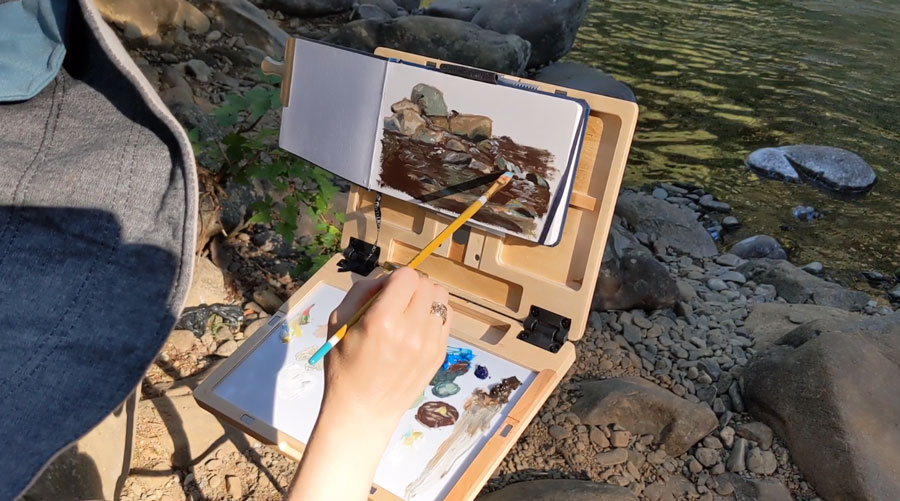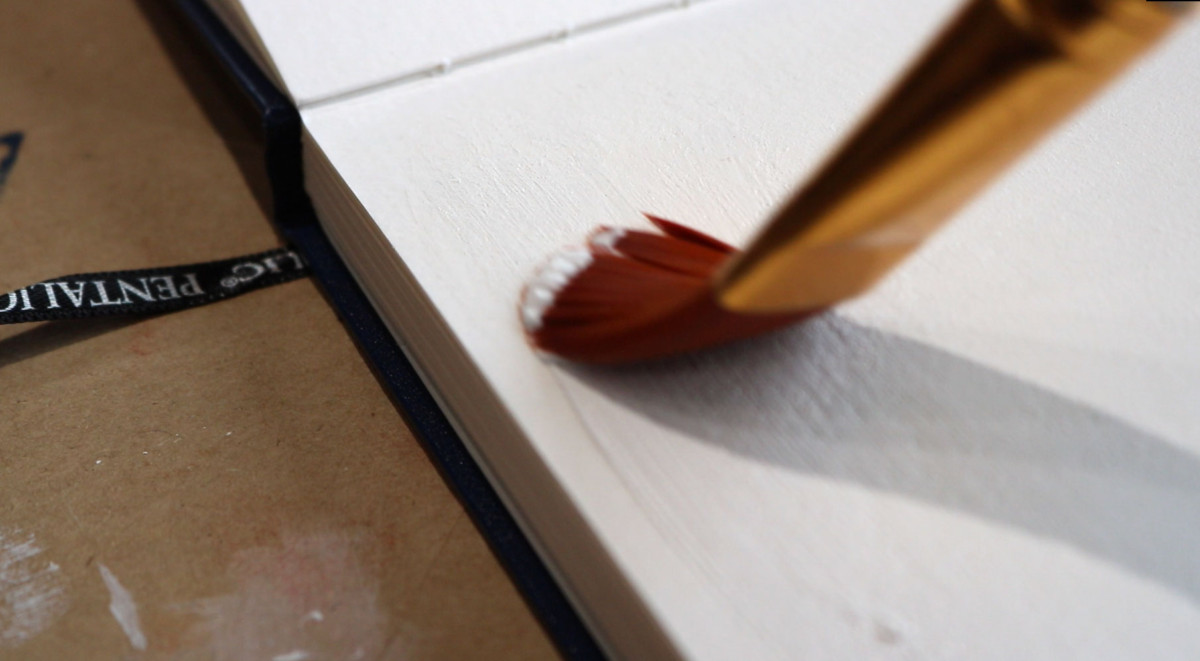
If you are practicing oil painting by doing oil sketches perhaps it would be easier for you to paint on paper. It is cheaper than canvas and saves space because it is much easier to store once your painting is done.
Using oil paint on paper requires a little preparation to seal the paper so the oils in the paint don’t soak into the paper causing it to deteriorate over time. The oil oxidizes as it dries, this will cause the paper to change colors turning brown and weakening the structure of the paper.
There are several ways to avoid this problem. With a little knowledge and preparation, you can paint on almost anything.
A Paper Made To Be Painted On
Canvas paper is designed to be painted on. You can buy a pad of it at any art store. You can use canvas paper for painting with both oil and acrylic paint. This paper has a canvas texture on it and it is already primed so the oils in your paint won’t be absorbed into the page. This is the fastest, easiest and cheapest way to oil paint on paper. I am not a fan of canvas paper because it is quite flexible, a bit more like canvas itself. I enjoy a more rigid surface to paint on.
Oil Painting In A Sketchbook
This is my favorite option for oil painting on paper. All of your oil painting studies will be stored in one convenient, and easy-to-store book on your shelf. It is also very fun to flip through your oil painting sketchbook in the future and see how you progress. I would suggest using a watercolor sketchbook as the pages are stiff enough to hold the paint as it dries. If you want to oil paint in a sketchbook I have more information like things to consider, and how to prepare the pages in my blog post: Can You Oil Paint In A Sketchbook

Can You Use Drawing Paper For Oil Painting?
If you are eager to start oil painting and this is all you have you can make it work but it is not recommended. If this is the case do yourself a big favor by preparing ahead of time, your painting will thank you for it.
You can use sheets of drawing paper to oil paint on as long as you seal them first. Drawing paper is not the best surface for oil painting because even if you seal it, the paper is likely going to warp from the moisture, this paper is not rigid enough to stand up to the paint.
Also, if you are intending to frame this painting and keep it for a while I would suggest a sealant layer and then also a layer of gesso. You don’t need the gesso layer, but it does help the paint stick to the paper a bit better. Painting directly on a sealant can be frustrating because the paint slides a tiny bit making it harder to get the look you want. If you are just practicing your oil painting this can be a good option if you don’t care about keeping your painting.
Can You Oil Paint On Matboard?
Matboard is available in large sheets at any art store or frame shop. Buying a large sheet and cutting it down will give you a lot of panels for doing studies, and can be a very cost-effective way to have lots of panels to practice your painting on.
You can paint on matboard if you seal the surface first. This can be a great option as it is rigid enough so that it won’t warp as the oil paint dries.
Matboard is a great option for Plein Air painters because it is lightweight and will fit in any wet panel holder that is designed for thin canvas panels. Finding ways to keep your painting pack as light as possible will encourage you to get out and paint more, and perhaps get off the beaten path further!
Oil Painting On Foam Core
As with matboard, foam core is a great choice because it is light and firm. Foam core does tend to be a bit more expensive than matboard, but works equally as well.
Foam Core is a great choice for an oil painting surface as long as you seal it with an acrylic sealant first, and then you can add a layer or two of gesso, to give you a nice texture to paint on.
If you plan to use foam core for Plein Air painting be aware that the orders can easily get bend and dinged while traveling. It is a great choice to keep the weight of your painting pack as light as possible.
All Other Paper Products
Any of the following papers should be sealed in some way before painting. If you are not concerned about the longevity of the painting you can just use one layer of acrylic gesso painted on the paper and you are good to go. On the other hand, if you want the painting to last for years, it is a good idea to use an actual acrylic sealant on the paper first to be certain that the oils will not seep into the fibers of the paper. Golden GAC 100 is one of the best acrylic sealants I have used. It has a nice thickness making it easy to apply. Once this layer is dry you can put a layer of gesso over it to have a slightly rough texture which will grab the paint off your brush.
Using Regular Printer Paper
If you are just eager to get painting and all you have is a sheet of paper pulled right out of your printer, you can paint on it, but your painting will not last very long, and the paper will turn various shades of amber. I would not recommend painting on regular paper that has not been primed in some way. Even if you are doing studies it is nice to look back in a few years and see how far you have improved over those years. Also, this paper is very thin and will likely warp from moisture, so it is not recommended.
Free Cardboard!
If you are just looking to get some practice or do some studies, you can cut up boxes that products come in. These days many product boxes have a smooth printed surface. As long as you seal it first you are good to go!
Many Options For Painting On Paper Products
With all these choices don’t get bogged down by decisions and choose which option is easiest for you. The most important thing is the time spent with a brush in your hand, so get going and make some paintings on paper.

